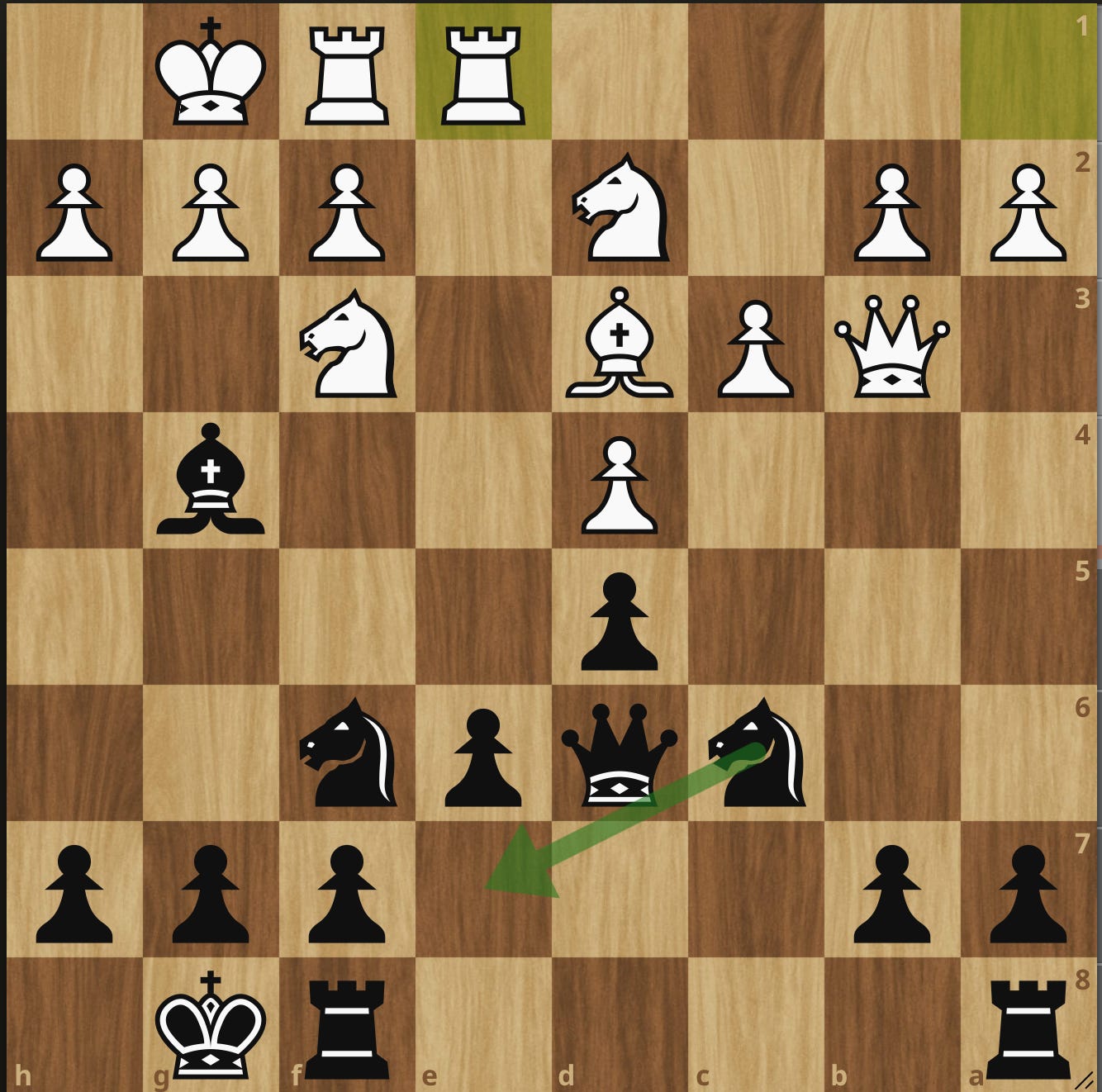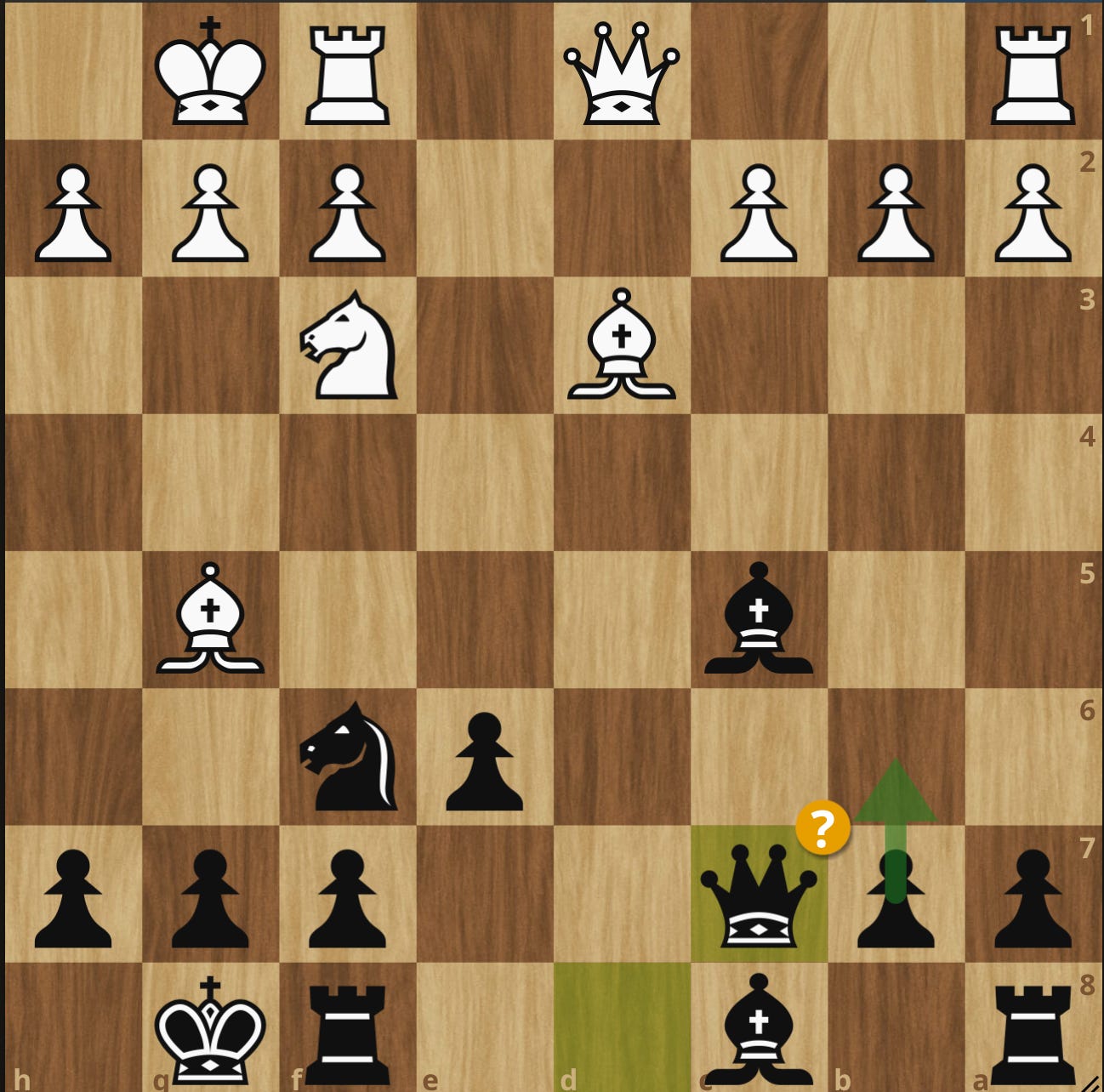Welcome back to the Analyze This! series where I go through games I’ve played. I had a game recently against a player stronger than I am. We played this game which I lost. I recommend playing up in general. Playing against stronger opponents can be challenging but instructive. This game was no different. Let me tell you what I learned before we get into the full analysis.
What I learned
I outsmarted myself by going away from my usual lines.
As a result, I got the move order wrong at a critical time.
I still had a chance to equalize, but stopped my calculation early and missed it.
I didn’t anticipate a sacrifice on f7 opening the way to my king.
First thing… I do not play the French (I’m a Caro Kann player), even though I did here. In my defense, I had noticed a pattern in my prep for this game. My opponent’s record was 7/11 against my Caro Kann but against the French he was 4/12. That seemed like an opportunity, so I explored his games. I noticed two positions of interest. However, instead of helping me win I outsmarted myself during my prep.
If I played my usual Caro Kann he’d have played us into the Exchange Caro Kann. We have gotten to this position (position #1):
Here, the best move for Black is to play Ne7 then Bf5 and trade bishops. This would have been a new line for him and maybe I could have caught him offguard. If White takes the b pawn, you play Rab8 then take the b2 pawn, playing for a probable draw. I didn’t feel that comfortable with this position and the plans. It seemed like only White was playing for the win here.
I had an alternative however in The French Defense. There is a line he struggled with: 1.e4 e6 2.d4 d5 3.Nc3 dxe (aka the Rubenstein Variation, Blackburne Defense)
In my prep I saw the plans here were simple.
White will capture on e4 with the knight
Black will play Nbd7 and then Ngf6 leading to an exchange of knights.
Black will then put the bishops to c5 and b7, aiming at the castled white king
After those moves I believed we’d get to this set up (position #2)
In this position, the plans are clear to me. The two bishops pressure White. Moving the Queen to c7 here induces Black to take on f6, opening the g file. In fact, this was a line played between Anand vs Gelfand from 2007. I felt confident this was the right plan…at least on paper.
Only problem was, I was unfamiliar with this opening. The French Defense is not a system opening where you can play the moves in whatever order you’d like. Turns out because I was unfamiliar with the line, I made a critical move order mistake playing 11…Qc7.
The best move was b6 to make a space for the light squared bishop. Only after placing the bishop on b7 could I then develop my Queen to c7. My opponent was confused by my move and assumed I knew something so he played 12.Qe2 instead. I could still play 12…b6 but I saw a threat and instead I played 12…Be7??
I thought if I played 12…b6 he’d play 13.Bxf6 gxf6 14.Qe4! with the dual threat of mate on h7 and attacking the undefended rook on a8. I’d be forced to play 14…f5 and then White would win the rook with 15.Qxa8. I stopped calculating there, assuming 12…b6 was losing and instead played 12…Bd7 intending Bc6 next. Only…see the resulting position below after 15.Qxa8.
What I didn’t find is that Black can trap the Queen with 15…Bb7! 16.Qxa7 b5!! and the White Queen is trapped! After 17.Qxb7 Qxb7 we have an equal trade (Q for R+B+P) but Black seems better. There’s no White dark squared bishop or Queen to attack the Black King. Black has good chances here.
I had stopped my calculation early and I missed this chance even though I had plenty of time on the clock. I am not saying this was an easy position to calculate. However, there were forcing moves I could have played. If there are forcing moves still possible then the line isn’t finished. I learned I need to calculate until the end of the line as best as I can.
Instead of that, I had a much worse position. After 12…Bd7? 13.Ne5! Rad8? it was essentially over. My opponent correctly placed his rook on e1 and then traded on f6 with 15.Bxf6!
My defense fell apart. All my pieces are on the Queenside of the board and are blocked from protecting the 7th rank. So after 15…gxf 16.Qg4+ Kf8 (Kh8? Nxf7#!) we got here…
My king is trapped in a box, with no defenders other than pawns. The rook on d1 plays a critical role controlling the d file should the d3 Bishop move. Still I thought I could get to e7 with my king, put the bishop on e8 and survive. I did not appreciate how strong the sacrifice on f7 was in this position.
After 17.Nxf7! I compounded the mistake with Kxf7? missing a defensive resource (17…f5!). In fact, that’s one thing I’ve noted in my games is I am missing resources for my opponents and sometimes for myself.
You can see my full analysis for the rest of the game’s moves. There weren’t that many more… I resigned on move 23. Still I learned that:
Play what you know. You're more likely to understand the plans and move order.
In critical positions calculate (as best as you can) to the end of the line until there are no more forcing moves.
Pay attention to the pressure on vulnerable spots around your king (f2/f7 for example). Anything attacked once and defended only once isn’t really defended.
Thanks for reading. Let me know your thoughts on the game or analysis. Good luck on your chess!













